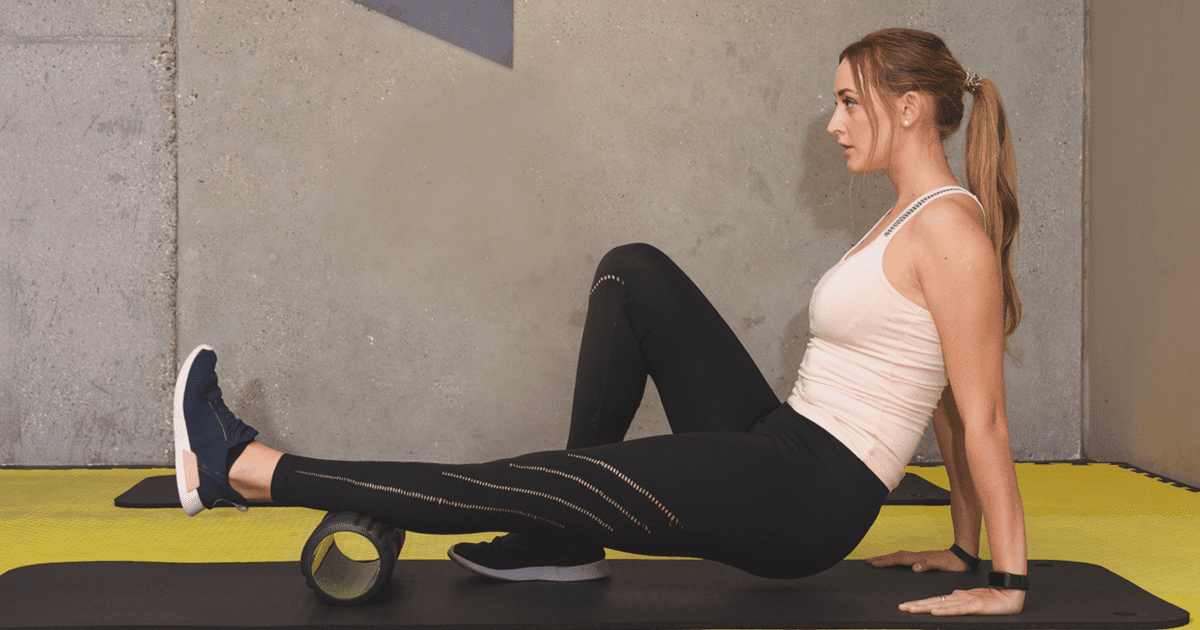If you think giving medicine to a puppy is easy, you’ve probably never owned a dog. The obvious strategy—opening the pup’s mouth and tossing in the pill—rarely works.
So you have to get creative. You sneak the pill into the dog’s food or wrap it in cheese, whatever you can do to make those vital meds more palatable for your pet.
Imagine your client is that puppy, and corrective exercise is the medicine. You know your client needs flexibility and stability work to succeed. But try giving it straight up, and there’s a good chance your client will bolt.
That’s because your clients didn’t sign on for a bunch of boring moves that don’t obviously help them get lean and chiseled. You, of course, know they need corrective exercises to make those results possible. There’s no way around it: They can’t train hard unless they move well. But try telling your clients that, and you risk demotivating them from the start.
Fortunately, there is a solution. You can integrate corrective exercise into your client’s program in ways that make it enjoyable. We’ll get to those in a moment. But first, let’s take a quick peek inside your client’s head.
READ ALSO: Don’t Fall for These Seven Back Pain Myths
What your client wants
You can preach the benefits of good health and functional fitness all you want. Fact is, 95 percent of new clients hire you for one reason: to look better. They want to burn fat, build muscle, and look great in old jeans (and out of them).
Ask them if they want to move better or improve their posture, and they won’t say no. (Who would?) But the main catalyst that brought them from the fridge to the fitness center was a desire to feel better about themselves when they look in the mirror.
That’s not vanity. It’s science. Research shows that people are driven by external rewards, things like appearance, money, and power. One review study found that when participants were paid to exercise, their workout attendance went up. That’s great. The problem is that external motivations work for only so long—up to six months, according to the study.
Still, if the prospect of dropping pounds and looking better in a swimsuit is what lured your client, you have to respect that. These are the goals they expect you to help them fulfill. Focusing on core activation, flexibility, and distal stabilization can feel like a broken promise, and that’s not how you want to start off your relationship.
What’s more, people expect to sweat at the gym. Putting them on a program that doesn’t feel intense enough, especially if fellow gymgoers are moving big weights and sprinting on treadmills, can make them feel like they don’t belong. And there’s nothing more deflating, especially at the front end of the fitness journey.
READ ALSO: The Single Best Way to Motivate Stubborn Clients
What your client needs
Still, while your client’s top priority is high intensity, yours is (and should be) movement quality. Your client needs to achieve baseline levels of core strength, stability, flexibility, and proprioception to benefit from higher-intensity training.
You don’t add 200 pounds to the bar until you can move it safely and effectively while it’s empty. You don’t deadlift from the floor if you’re not flexible enough to reach it with good form.
The irony: The type of exercise that’s designed to fix compensations and improve stability is exactly the kind most clients avoid.
That’s why you have to sneak it into their program. Like puppy medicine.
Here are five ways to give your clients what they want and what they need.
READ ALSO: How to Train Around Five Common Causes of Pain
1. Destabilize classic muscle builders
Everyone who walks into a gym understands that if you want to see bigger muscles in the mirror, you have to work them directly. Even children will immediately curl or press a weight if you put it in their hands. To your client, a workout won’t feel like a workout unless they hit those muscles.
You can easily modify traditional exercises by adding a stability challenge—standing instead of sitting, using a staggered stance instead of parallel, or even standing on one leg instead of two.
Two examples:
Single-leg biceps curl. Advanced version: client moves the lifted leg in different patterns between reps.
Two-point push-up. Pause at the top to balance on one hand and the opposite-side leg.
READ ALSO: What Every Trainer Should Know About Anterior Pelvic Tilt
2. Gamify movements clients want to do at a fast pace
Your client, understandably, wants to crank out sets like everyone else in the weight room. But you need the client to slow down and concentrate on each repetition. I’ve found that playing games helps increase time under tension without the client getting bored by the slow pace or isometric holds.
Two I’ve used successfully:
Pursue trivia
At the start of a set, give your client a category—say, ice cream flavors. They have to name a different flavor on each rep. Customize the categories to your client’s interests. You can make the categories harder for a unilateral exercise that includes fewer reps, or easier for a high-rep movement.
Play catch
Pass a ball to your client during isometric exercises (squat holds, side planks, glute bridges …) or at different points during body-weight exercises like squats, lunges, or step-ups. Up the ante by choosing balls of different weights, calling the hand your client must catch with, or varying where you throw the ball. Keep your client guessing.
As long as you control the pace and gradually ramp up the challenge, you’re improving the client’s balance and proprioception, with real-life implications.
READ ALSO: Don’t Let Your Clients Butcher These Three Moves
3. Use active recovery to manage fatigue
By having your client stretch or foam roll between sets, you keep her moving (assuming that’s what she wants), you target the problem areas you’ve identified during your assessment, and you still allow full recovery between sets.
For example, you could foam roll the calves between sets of squats or lunges, or do a chest-opening mobility exercise between squats or deadlifts.
READ ALSO: Three Functional Tests to Assess Quality of Movement
4. Make the warmup feel like a workout
Corrective exercises are most valuable at the beginning of a workout, for all the obvious reasons. As part of a comprehensive warmup, they ensure your client is ready to do the rest of the workout with adequate stability and range of motion.
But for clients who’re impatient with a slow start, you can kick things up a notch by arranging the warmup exercises, including correctives, into a circuit. Here’s an example:
Warmup circuit
Complete three to five rounds with no rest between movements.
- Bird dog: 10 reps each side
- Quadruped T-spine rotation: 10 reps each side
- Stability ball I-Y-T: 15 reps
- Banded glute bridge: 15 reps
- Reverse lunge with overhead reach to single-leg balance: 10 reps each side
READ ALSO: Why “Safe” Exercises Are Not Safe for Every Client
5. Rebrand the unsexy exercises
Perception matters. If the client sees designations like “warmup” or “flexibility” on her workout chart, she might flash back to middle school gym class. Try these swaps:
- “Movement prep,” “mobilization,” and/or “muscle activation” for warmup
- “Prehab” or “stability” for corrective exercise
- “Energy systems training” (or just EST) for low-intensity cardio
- “Metabolic conditioning” or “GPP” (general physical preparation) for higher-intensity cardio
- “Regeneration” for stretching or foam rolling at the end of a workout
The goal is to make the most mundane parts of the program sound like something LeBron James probably does. As any PTDC reader knows, it’s all about the marketing.
READ ALSO: How to Supercharge Your Client’s Motivation
Final thoughts
Your clients may come for the abs, but they stay for the higher quality of life, when they realize they have an easier time picking up their kids, carrying groceries, or simply getting in and out of cars or going up and down stairs.
Corrective exercise makes all that possible for the clients who need it, even if they don’t appreciate it at first. By using the techniques I just described, you can give your clients what they want and what they need. They’ll be happy now and even happier later.










